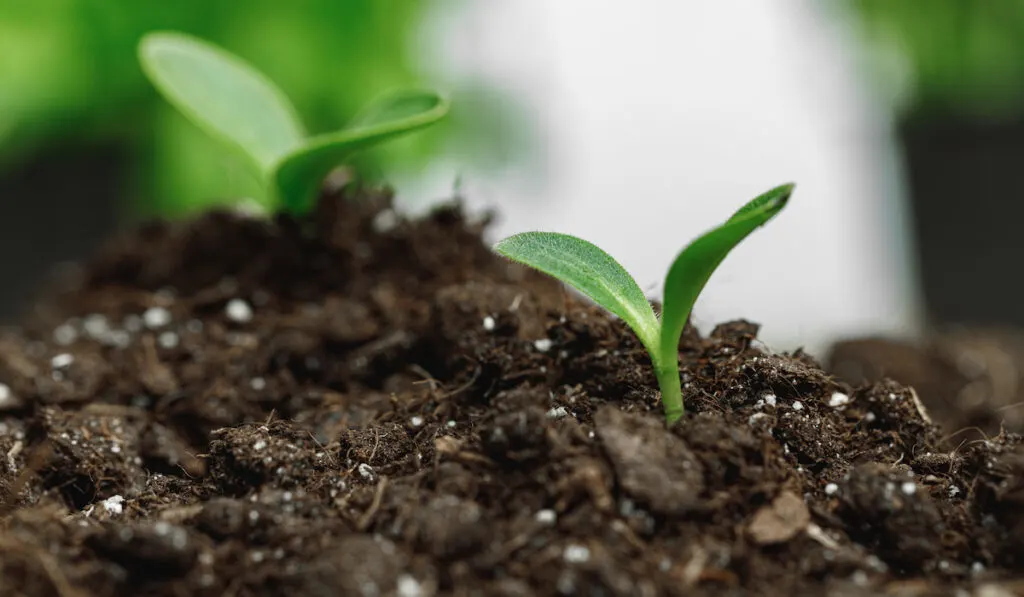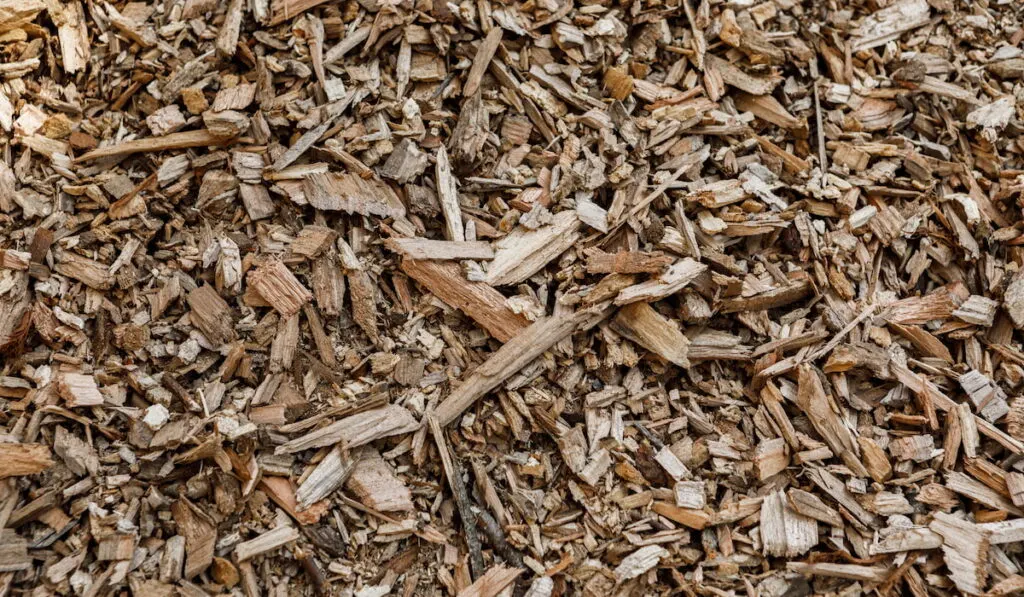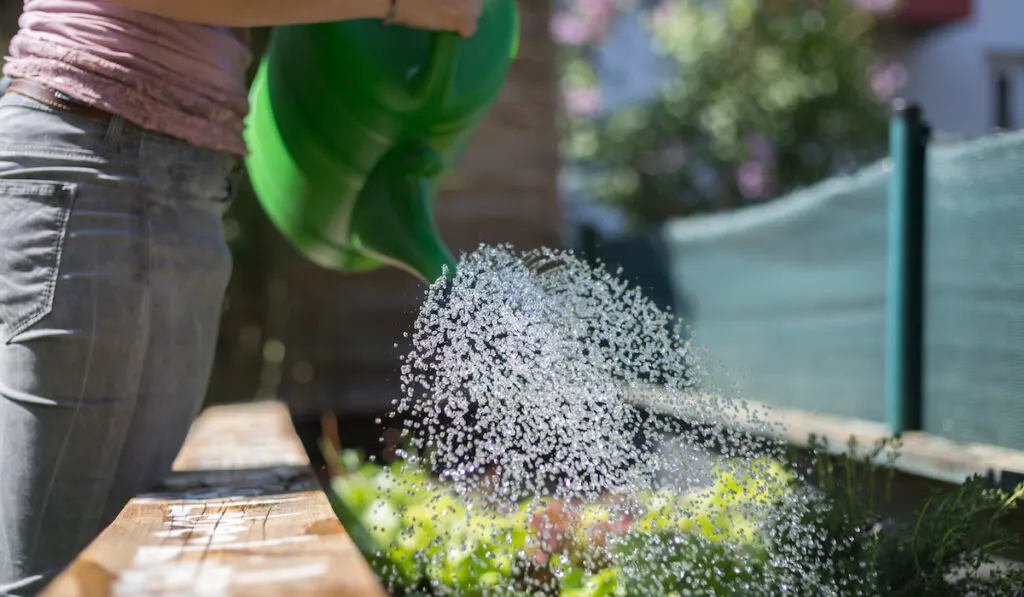If gardening is your passion but you have limited space, raised bed gardening could be a great way to start. This type of gardening is ideal for growing small flowers and vegetables. Moreover, it keeps weeds and pests away from your garden and also prevents the soil from being swept away during heavy rainfall.
For people with back issues, it is particularly helpful. Since the soil level in raised beds is high, you don’t have to bend too much while tending the bed. You can even sit at the edge and water your plants.

As someone new at raised bed gardening, you might have some questions in mind such as which soil should I use? How frequently should I change it? Rightly so, because soil is the most important element of gardening. Don’t worry! This article will give you a detailed insight on how to make your garden more productive by using various soil techniques.
You do not need to replace the soil in raised garden beds. Amending the existing soil is typically sufficient to restore nutrients to allow for better plant growth.
Whether you have an in-ground garden or a raised bed garden choosing the right kind of soil is very important the reason being; more water can be stored and processed in healthy soil. Poor quality soil will hinder the plant’s ability to flourish and survive.

Table of Contents
Choosing the Right Soil for Your Raised Bed
When first creating a raised bed, special attention should be paid to the soil you are going to use. In most cases, you cannot simply use the soil taken from your yard.
Your existing soil may be too dense or lack the nutrients needed to grow healthy plants in a raised bed. The soil needs to have all the essential nutrients and proper drainage in order for your flowers and vegetables to flourish.
The soil typically used for a raised bed is topsoil which is a loamy mixture of sand, silt, and clay and has the highest concentration of organic matter. This soil forms the upper layer of the bed and contains all the important nutrients.
For raised beds, 70% topsoil should be mixed with 30% compost. However, if you feel that the topsoil is poor quality then it is recommended to add 10% potting soil which is a soilless growing mixture consisting of peat moss and perlite.

To get an accurate idea of the quantity of soil you should use, you can use a soil calculator. If you don’t feel confident using it, you can also consult your local gardening club or university agriculture extension.
If you do not have enough budget to get topsoil and compost you can go for the lasagna gardening method. In this method, you layer the bottom of the raised bed with twigs, leaves, and other compostable food such as eggshells, tea leaves, coffee ground, etc.
This allows the base of your raised bed to be filled with organic matter at a reduced cost. Over time, this material will decompose and add nutrients to the soil.
Once you have chosen the right kind of soil, a genuine question that arises here is; what if I fail to maintain the soil, will it become worn out? Would I have to change the soil of the whole bed? Let’s find out the answer to these questions.
Does Garden Soil Get Old and Worn Out?
If you are planting new flowers in the same raised bed and you feel that you weren’t able to give the required amount of care to your garden’s soil, don’t worry! It won’t wear out.
There are ways to revive the garden bed. There is no need to completely replace the soil in a raised bed unless it is contaminated.
Replacing the bed soil is time-consuming and expensive anyway, so the best approach here would be no-till. It keeps the useful fungi and bacteria underground which promotes the growth of plants.
The next step would be to add compost to the soil. A 70% soil to 30% compost is recommended given that the quality of both the soil and the compost are up to the mark.
Amending the soil plays a huge part here as it helps in retaining moisture and provides the necessary nutrients to the soil which prevents it from being worn out.
So, the good news is that the soil doesn’t wear out, and even if it does, you can rejuvenate it. However, this requires a lot of time and energy so why not just keep your soil healthy to prevent it from getting old in the first place. Here’s how you can do that.

3 Ways to Keep the Soil Healthy in Your Raised Garden Bed
One of the benefits of raised bed gardening is that even if the soil in your area is of poor quality, you can still add healthy soil separately to your raised bed depending on the kind of flowers or vegetables you want to grow.
However, the important thing here is to replenish your raised bed’s soil so it doesn’t wear out. Here are some tips to keep your soil healthy.
Amend the soil
Using soil amendments is a great way to keep your soil healthy as they contain organic matter which allows air and water to travel through the soil and increases the plant’s growth.
They also help the soil to retain moisture, absorb important nutrients and make it resilient against compaction and other dangers.
Some of the soil amendments that you can use are:
- Vermicompost
- Ground Bark
- Composted Cow or Poultry Manure
- Greensand
- Grass clippings
- Cornmeal
- Lava sand
Before you use any of these soil amendments, it’s best to get a soil test done because it can help you determine which soil amendment is needed for your soil and how much.
Cover the soil
Covering the soil is another great way to improve the health of your soil because uncovered soil is prone to wind and water erosion and can lead to organic matter and structural loss.
Use of Cover crops can be a good idea for this purpose. Cover crops not only provide essential nutrients to the soil but also aerates it. Legumes such as alfalfa, fava beans, and crimson clover can be great cover crops.
Adding mulch is also an effective cover for the soil. It reduces moisture, maintains a moderate temperature, and is a natural barrier to prevent weeds.
Avoid soil compaction

Soil should not be dug when it’s too wet because it gets compacted, so you should wait for it to be sufficiently dry or until it reaches 50 degrees. Compaction makes it difficult for the roots to expand and limits their access to water, sunlight, and other nutrients.
You can help avoid compaction by making the width of the raised bed no more than four feet so you can easily reach the middle of the bed without stepping or kneeling on the soil.
So, avoiding compacting will prevent the reduction of pore space in the soil thus resulting in healthy soil.
Since we have established that amending the soil is one of the best ways to keep the soil healthy, the question that comes to mind is when is the right time to amend the soil? Well, the answer is right here!

How to Know When to Amend the Soil
If your raised bed garden is drying out, has too much sand in it or the plants are turning yellow, it’s possible that the soil in the raised bed needs some amendments.
It is important to make sure the ph level of the soil is neutral because that’s when the amendment will work best. So, getting a soil test done is the best way to proceed.
A soil test will help you find out which nutrients your soil is lacking so it will be easy for you to determine which soil amendment to use.
If your raised bed looks good and you don’t feel the need to amend it, it’s still a good idea to amend your soil every fall. This way the amendments have all winter to work through and be absorbed into the soil so that when spring comes your flowers are all ready to blossom!
Although the soil of raised beds can not get old or worn-out, it is important to replenish it with the right amount of amendments to keep it healthy. Choosing the right quantity of soil, and amending it with the right material is equally as important. Keep these points in mind and have fun with your gardening!

Ramón Urteaga
Tuesday 7th of September 2021
One of your suggestions is to add mulch to the soil in your raised bed. I assume that means on the very top surface of the soil. What do I do with the mulch when I add amendments the following year and have to mix the amendments with the existing soil already in the bed? Is there a problem with mixing the mulch with the existing soil and amendments? Did I misunderstand? I am new to this, so I apologize in advance if my question doesn't make sense. Thank you.